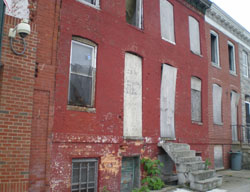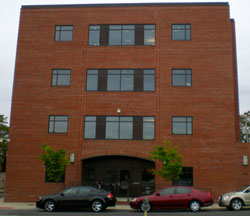Where We Work
Baltimore, Maryland

Similar to many other US cities, urban Baltimore City has been heavily impacted by intersecting epidemics of HIV infection and injection drug use. The ALIVE study has been continuously working in Baltimore for over 25 years. Recent data have estimated that 1 in 8 adults in Baltimore are heroin-dependent,2 and Baltimore has among the highest rates of heroin and crack-related emergency room visits and drug-induced deaths in the country.3 Injection drug use accounts for around half of prevalent HIV/AIDS cases in Baltimore, notably higher than in the US nationally. The median ages of people living with HIV/AIDS, new HIV diagnoses and new AIDS diagnoses are between 40-49. Around 85% of persons living with HIV/AIDS in Baltimore are African American; it is estimated that 1 in 9 African-American males, between 40-49, in Baltimore is living with HIV.4 Additional detailed information about HIV/AIDS in Baltimore can be found in the Maryland Department of Health and Mental Hygeine presentation, HIV/AIDS in Baltimore City: An Epidemiological Profile (May 24, 2012). You can learn more about the dynamics of race, drugs, poverty and incarceration in the Fault Lines segment "Baltimore: Anatomy of an American City" on Al Jazeera.
Since its inception in 1988, the AIDS Linked to the Intravenous Experience (ALIVE) cohort study has accurately reflected the Baltimore HIV/IDU epidemic.5 With a median age of 52 and ~90% African American, ALIVE represents the minority, disadvantaged, and socially-marginalized population at highest risk for HIV acquisition, progression and limited access to care in Baltimore and nationally.
The Wood Clinic

The Wood Clinic was named for Alexander Wood, inventor of the hypodermic needle or syringe needle in 1853. The Wood Clinic was established in 1988 to house the ALIVE Study and its related sub-studies. It is dedicated to conducting epidemiological and clinical research that contributes to the knowledge of infectious diseases and benefits both the community and society. ALIVE is committed to maintaining a supportive and confidential environment and to providing education and referrals to our population, which has traditionally been underserved.
The Wood Clinic is community-based in East Baltimore, yet within walking distance to the Johns Hopkins Medical campus. The physical location and environment of the clinic were designed to promote an approachable and comfortable atmosphere of trust and rapport.
1. Brady JE, Friedman SR, Cooper HL, Flom PL, Tempalski B, Gostnell K. Estimating the prevalence of injection drug users in the U.S. and in large U.S. metropolitan areas from 1992 to 2002. J Urban Health. 2008;85(3):323-351.
2. ONDC. Smart Steps: Treating Baltimore's Drug Problem. 2000.
3. Substance Abuse and Mental Health Services Administration. Morality Data from the Drug Abuse Warning Network, 2002. Rockville, MD; 2004.
4. BCHD. Baltimore City HIV/AIDS Epidemiological Profile. Baltimore, MD; Fourth Quarter. 2008.
5. Vlahov D, Anthony JC, Munoz A, et al. The ALIVE study, a longitudinal study of HIV-1 infection in intravenous drug users: description of methods and characteristics of participants. NIDA Res Monogr. 1991;109:75-100.
